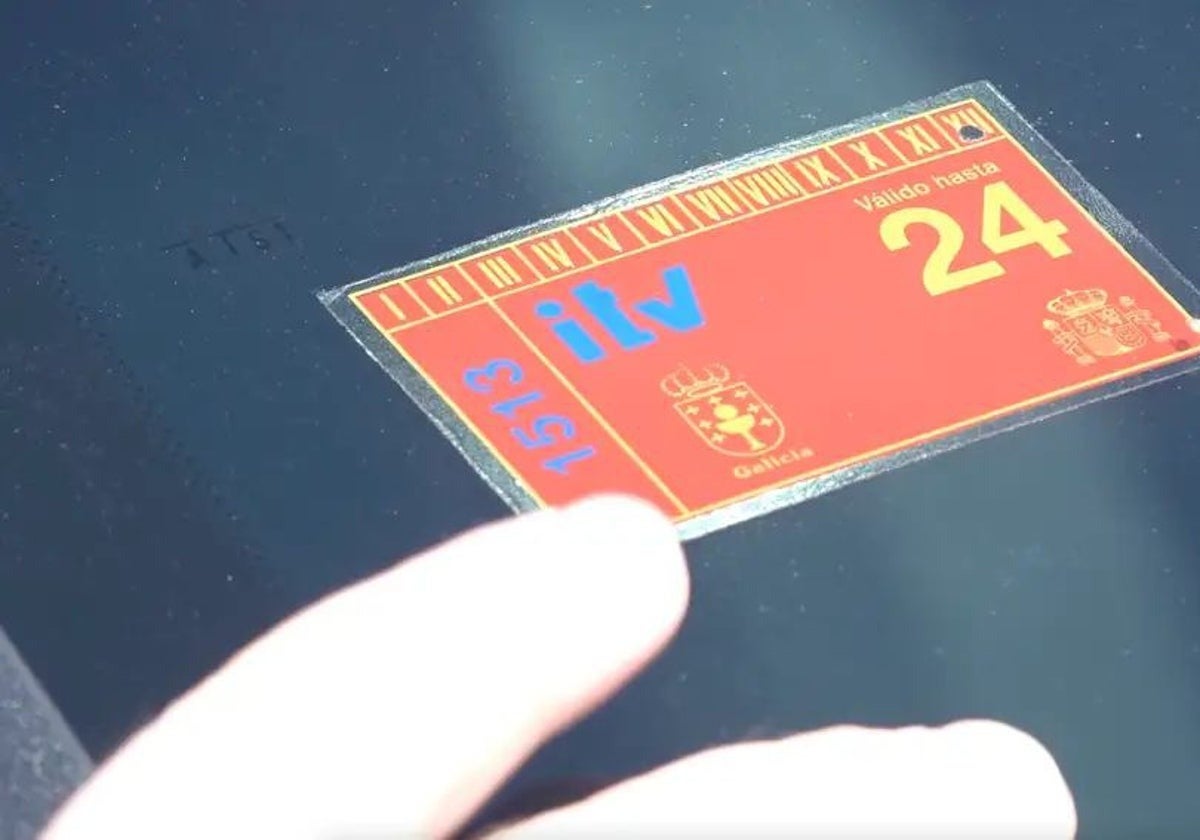

Sections
Highlight

J. Bacorelle
El Barco de Ávila
Tuesday, 14 January 2025, 17:08
The "Distintivo de Inspección Técnica Periódica del Vehículo" is given to a vehicle's driver once it has successfully passed its ITV roadworthiness inspection - the Spanish equivalent to the MOT in the UK. The sticker must be placed in a visible place, normally on the upper right-hand corner inside the windscreen. In the case of motorbikes, the sticker must be easy to see.
With this explanation, the Spanish association of entities collaborating with the administration in the technical inspection of vehicles (AECA-ITV) has clarified that the information circulating on social media about the sticker no longer having to be displayed on the windscreen is a hoax. The regulations concerning the inspection have not changed in this regard, and therefore it is still compulsory to display the sticker correctly on the windscreen of the vehicle.
The AECA-ITV has stated that in 2025 the use of the ITV sticker will continue to be mandatory. Not having it displayed on the vehicle is considered a minor traffic offence, for which the driver may be fined 100 euros.
The regulation on the ITV sticker is contained in the general vehicle regulation, approved by Royal Decree 2822/1998, of 23 December (Annex XI signs on vehicles), so a modification of this regulation would have to be made through a regulation of the same legal rank, i.e. Royal Decree, or higher rank, which to date is not foreseen.
AECA-ITV also explained that the ITV sticker, in accordance with the General Vehicle Regulations, is called V-19 and its main purpose is to allow the authorities to know, at a glance, whether or not the vehicle has a valid ITV. "It is not a simple sticker. It has the same relevance as the rest of the vehicle's official documents", added Guillermo Magaz, managing director of AECA-ITV.
The ITV sticker can be yellow, red or green. Its colour indicates the year in which the vehicle's ITV is due, so that the authorities can quickly see whether the vehicle has been inspected or not. This is why it is so important to carry only the current ITV sticker, eliminating all other stickers from previous inspections.
The calendar is set in a specific order and each colour is assigned to a specific year. For example: green stickers correspond to ITVs that expire in 2025, 2028, 2031. The yellow ones are those that will expire in 2026, 2029, 2032. Red stickers are those that expire in 2027, 2030, 2033.
The sticker also includes other information about the vehicle. The most important piece of information is the year in which the vehicle's ITVexpires, the last two digits of which are shown on the sticker.
There are also Roman numerals indicating the month of expiry, which is perforated before being handed over by the inspector. The number of the ITV station that carried out the inspection and the coat of arms of the region (for example, Andalucía) in which it is located are also identified.
Publicidad
Publicidad
Publicidad
Publicidad
Esta funcionalidad es exclusiva para suscriptores.
Reporta un error en esta noticia
Comentar es una ventaja exclusiva para registrados
¿Ya eres registrado?
Inicia sesiónNecesitas ser suscriptor para poder votar.